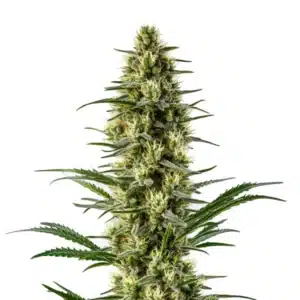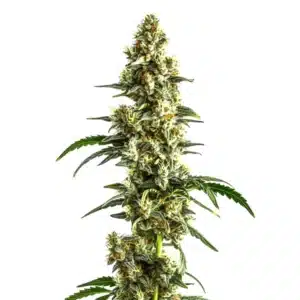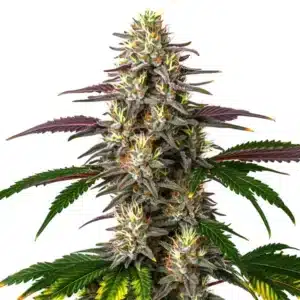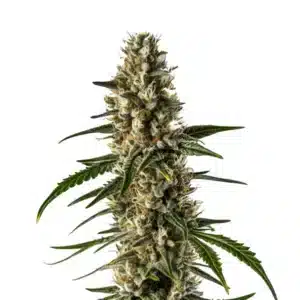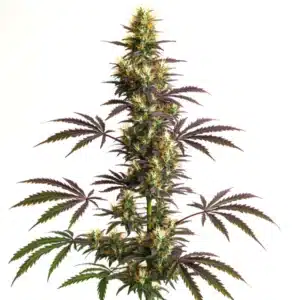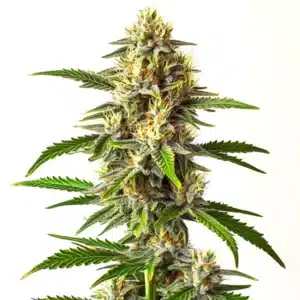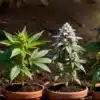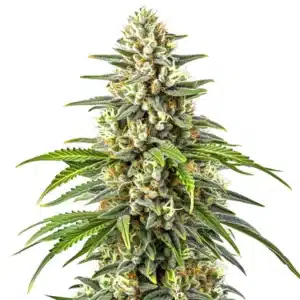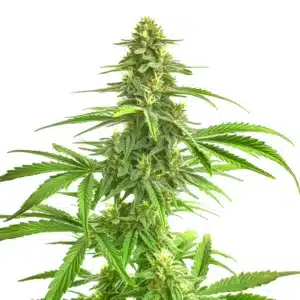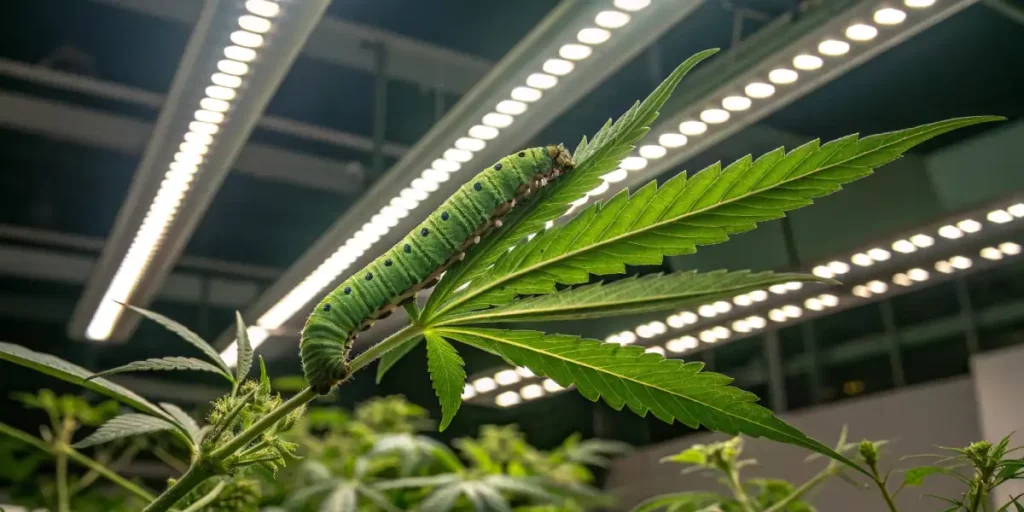
Identify Big Green Caterpillar on Cannabis
If you’re a cannabis cultivator, you might encounter a big green caterpillar on your plants. This is a common concern, as these larvae of moths or butterflies can cause significant damage if not dealt with promptly. Identifying them is crucial for maintaining the health and yield of your plants. This guide will provide you with information on how to identify and manage these pests.
Identification Guide for Big Green Caterpillar on Marijuana
There are several species you might find, including the tobacco hornworm, the tomato hornworm, and the cabbage looper.
Recommended Strains
Agent Orange
|
|
THC | 21% - 22% (Medium) |
|
|
Type | Feminized |
|
|
Yield | High |
|
|
Phenotype | 25% Indica / 75% Sativa |
Agent Orange Regular
|
|
THC | 16% - 19% (Medium) |
|
|
Type | Regular |
|
|
Yield | High |
|
|
Phenotype | 30% Indica / 70% Sativa |
- Tobacco Hornworm: A large, bright green caterpillar with diagonal white stripes and a distinctive red horn at its rear end.
- Tomato Hornworm: Similar, but its horn is black instead of red.
- Cabbage Looper: Smaller than the hornworms, with a distinctive looping movement.
These caterpillars are known to eat marijuana leaves and buds and can completely defoliate a plant if left unchecked.
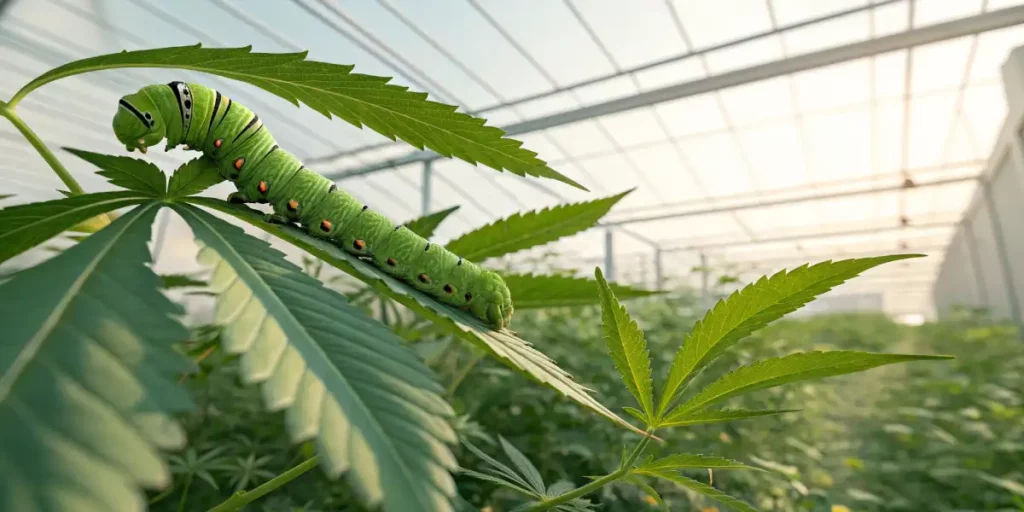
Damage Signs
One of the easiest ways to identify a caterpillar infestation is by looking for signs of damage. Always watch that the leaves of your plant are healthy and green. Check them for bite marks or small holes, making sure to inspect the undersides as well. These pests eat large amounts of foliage, leaving noticeable signs. Don’t forget to inspect the undersides of the leaves regularly, as this is where caterpillars often hide, nest, and lay their eggs.
Look for chewed buds and their droppings (frass) on the leaves or ground. The droppings are a major problem, as their excrement can turn into botrytis (bud rot) and other fungi, ruining the flowers from the inside out. Recognizing the signs early allows you to act quickly and minimize damage.
Prevention and Control
Preventing an infestation starts with good gardening practices. Keep your growing area clean and regularly inspect your plants.
The biggest problem is finding them during the flowering stage. At this point, you cannot spray anything toxic on the buds without contaminating your final product, which means you often have to remove them by hand, one by one. Manual removal is the simplest method for small infestations.
For larger problems, consider these methods:
- Increase Airflow: Caterpillars and the moths that lay their eggs are bothered by wind. Increasing ventilation in your grow space can make the environment less hospitable for them.
- Natural Pesticides: Use organic options like Bacillus thuringiensis (Bt), a bacterium lethal to caterpillars but safe for plants, or neem oil.
- Biological Control: Introduce natural predators like parasitic wasps or ladybugs.
- Advanced Control: Some growers use sulfur burners to fight both caterpillars and mold. This involves vaporizing sulfur in the grow space, but it is an aggressive technique that must be used with extreme caution and typically only during the vegetative stage or in an empty room between cycles, as it can affect the final taste of the buds.
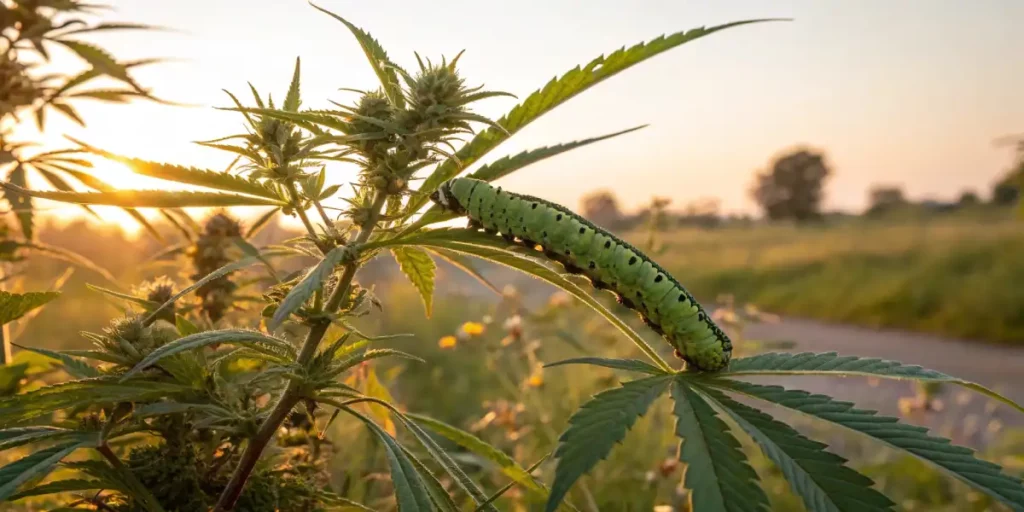
Promos & Deals
FAQ Section
How common are big green caterpillars on cannabis plants?
They are fairly common, especially in outdoor gardens where moths and butterflies are abundant. Regular inspection can help you manage them effectively.
Are there any natural predators of big green caterpillars?
Yes, natural predators include birds, spiders, and parasitic wasps. Encouraging these in your garden can help control caterpillar populations naturally.
What other pests should I watch out for?
Besides caterpillars, other common pests include aphids, spider mites, whiteflies, and thrips. Each requires a different approach for control.
Can big green caterpillars infest indoor cannabis plants?
While more common outdoors, they can also infest indoor plants. Moths can enter through open windows or be brought in accidentally. Vigilance is important even when growing indoors.


